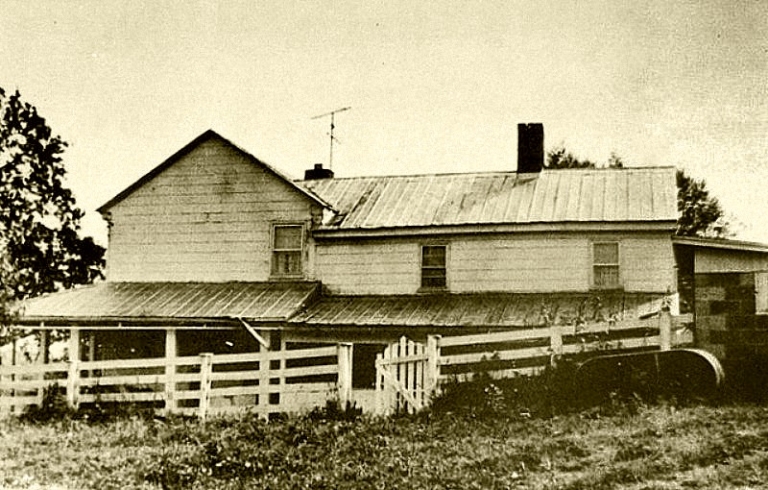
LEWISBURG, W.Va. — Whether you believe in ghosts, it's a fact that a ghost enters the lawbooks in West Virginia. The account of the "Greenbrier Ghost," as the specter of the late Zona Heaster Shue came to be known, has been retold time and again, but, as is the case in most such tales, the earliest versions are often the most true-to-form.
Thus, we've endeavored to reprint the story as it appeared in the New York Sunday American not long after the death of its antagonist. The account as it appeared in about 1910 here follows.
The Greenbrier Ghost
Possibly the most startling and corroborative evidence that mediums could offer to prove their contention of conversation with the dead is the conviction of Edward S. Shue in Greenbrier County Circuit Court at Lewisburg in 1897 for the slaying of his wife.
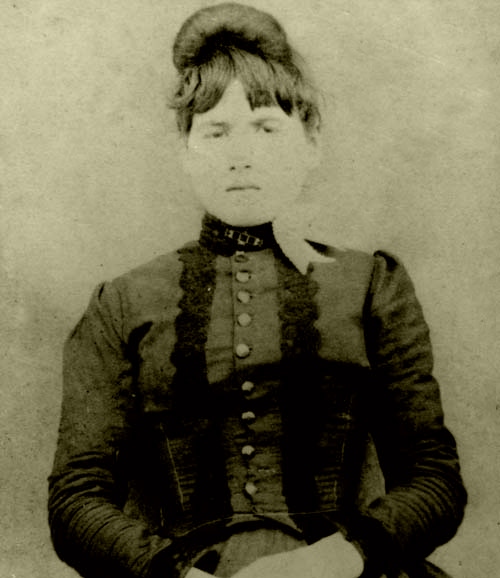
The state's case against this defendant—an apparent peaceable village blacksmith of the 1890s— was based entirely upon circumstantial evidence—evidence that was "dreamed" by Mrs. Shue's aged mother while sleeping in her rustic home, 14 miles away from the scene of the killing on the other side of Sewell Mountain.
Ghost stories are legion. Dreams have come down through the centuries. But little credence is given their visions. But nobody has ever actually proved, except for Mrs. Mary J. Heaster, mother of the slain Mrs. Shue, that the dead can come back in some form and communicate with the living. Mrs. Heaster, beyond any semblance of doubt, is an exception.
Musty reports, yellow with age, are on file in the ancient, historic courthouse at Lewisburg to prove it. This remarkable woman, the records reveal, had four separate and distinct dreams. In each of them, her daughter arose from the grave to tell and actually describe how she had been murdered. "Fantastic" is a poor description, but those dreams convicted Edward S. Shue of murder in the first degree.
When Mrs. Heaster first told of her dead daughter's visits, friendly neighbors and authorities slyly scoffed at the aged woman's accusations against her son-in-law. Had not a competent doctor examined Mrs. Shue when her body was found, pronouncing her dead of natural causes after all known methods of resuscitation, applied in the presence of witnesses, had failed? Surely then, this grief-stricken mother was the victim of wild and fantastic dreams induced by a shocking loss. But Mrs. Heaster steadfastly insisted her daughter's visits were not the work of her imagination; were not dreams in any sense but actual communications.
Such beliefs and superstitions possibly were more rampant in Mrs. Heaster's day than in the present era. Fortunately, they were! Soon she had enlisted several followers to her cause. Neighbors of the late Mrs. Shue, over on the other side of the mountain, heard the strange story and recalled unusual incidents that occurred directly after the young woman had been found dead. Dismissed as of no consequence at the time, they now loomed big, casting a shadow of doubt over the sincerity of Shue, the village blacksmith.
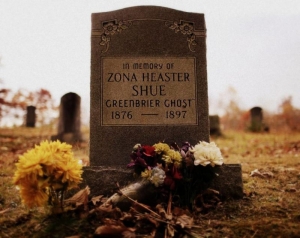
It was indeed true that Shue had acted most strange throughout the period immediately following his wife's death and preceding her burial. He never left the head of his wife's coffin in the presence of mourning relatives or visiting neighbors who came to pay their last respects. When the doctor rushed to the house the day Mrs. Shue had been found dead, Shue was already there holding her lifeless form tenderly in his arms. Not once did the physician's cursory examination relinquish Mrs. Shue's head, holding it close to his chest while he cried in anguish and prayed that a spark of life might resurrect her stiffened, cold body.
But Mrs. Shue was beyond all help, dead of a broken neck? Whether or not she actually returned to this world in some manner to convict Shue of a brutal murder, which had escaped detection by authorities and even her family, or whether Mrs. Heaster, in her dreams, accidentally hit upon a solution to the crime, never will be determined to the satisfaction of all. But her dream testimony finally brought about the arrest and subsequent conviction of Shue, throwing the populace of Greenbrier County into a furor and providing one of the most interesting and unusual murder mysteries in the history of West Virginia.
Only one witness to events following the discovery of Mrs. Shue's body, and, later, the sensational trial, is still living. He is Anderson Jones, a respected Negro living at Lewisburg. Jones can vividly recall the startling events. His recitation of the fantastic mystery is given ample corroboration by court records.
Jones thinks he was about eleven years old in November 1896 when Shue married Miss Zona Heaster, of Meadow Bluff district, at the Old Methodist Church in Livesay's Mill. After the wedding, they took up residence in a small two-story frame building that had been the residence of the late William G. Livesay, who gave the settlement its name.
Shue, a former resident of Pocahontas County, had come to Greenbrier a short time before the wedding to work for James Crookshanks at his blacksmith shop. A towering man of unknown strength, he presented a striking figure as he forged shoes before the flaming fire.
Despite his previous marriages to two women, both of whom died suddenly, young Miss Heaster fell madly in love with Shue, and after a brief courtship, they were married. Their little home seemed complete with happiness. No one would ever suspect it was to end in tragedy.
During the first days of January 1897, Mrs. Shue fell ill. For several weeks she was under the care of Dr. J. M. Knapp. Shue appeared very attentive to his bride's needs, giving no cause for suspicion of what was in his mind.
Early on the morning of January 22, he appeared at the cabin of "Aunt" Martha Jones, mother of Anderson, to ask if the boy could go to his house and attend some chores for Mrs. Shue.
Shaking his greying head, Jones clearly recalled that memorable day. He said, "I can remember it well. It was a Saturday. Mammy told Mr. Shue I had to go to Dr. Knapp's first and finish some work there. He seemed to resent this but asked if I would go later in the day.
"Four times he came back to the house for me. Each time I was busy. About 1 p.m. he came again, and I agreed to run his errand. Going to the house, I felt that something was wrong. All the doors were closed, and there was an air about the place I did not like.
"Reaching the steps, I saw a trail of blood. That scared me, but I went to the door and knocked. No one answered. I tried it and, finding the door unlocked, walked into the kitchen. The trail of blood continued across the floor to the dining room. This door, too, was closed.
"Once more, I knocked. And, getting no answer, walked in. I stumbled over Mrs. Shue's body. There she was, stretched out or the floor, looking right up at me through wide-open eyes. She seemed to be laughing.
"I was frightened but still able to reach down and shake her. She was stiff and cold, Running from the house, I called across the field to Aunt Martha, 'Mrs. Shue is dead!'
"As she ran to the house, I went down the road for Mr. Shue, finding him at the blacksmith shop with Charles Tapscott. When I told him what I had found, he yelled and, with Mr. Tapscott, started for the house. I continued on to get Dr. Knapp.
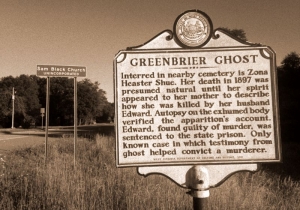
"When we reached the house, Shue had taken his wife from the floor, placed her on the bed, and held her head in his arms crying for her to come back. But, strangest of all, although no one thought of it at the time, he had dressed Mrs. Shue, placing one of those old-fashioned high, stiff collars around her neck and holding it in place with some kind of scarf.
"Dr. Knapp immediately started an investigation to determine if Mrs. Shue was still alive. Throughout his efforts to revive the woman, Shue continued to hold her head, refusing to let him examine it. Finally, the doctor turned and said, 'It is an everlasting faint. Her heart has failed.' "
The next morning, Mrs. Shue's body, accompanied by her husband and several neighbors, was taken over the mountain to Mrs. Heaster's home. On Monday, she was buried in the little family graveyard high up on the side of the mountain. In the interim, before the funeral, Shue never once left his dead wife's side in the presence of others. When not at the coffin, he permitted no one else to go near it, not even her mother. Taking his place at the head of the corpse, he guarded it closely.
In addition, he placed a folded sheet on one side of his wife's head and some nondescript garment on the other. They served to keep it in an upright position.
Several days after the funeral, Mrs. Heaster was awakened from her slumber by a noise in the little cabin room. Startled, she recalled constant prayers since her daughter's death, seeking the real solution to it. Maybe they were about to be answered.
Peering through the darkened room, Mrs. Heaster made out an object. It was her daughter, dressed in the very dress she had died in. The young girl seemed about to speak, but when her mother reached out her hand, seeking the coffin, the girl disappeared.
The next night, Mrs. Heaster resumed her prayers, praying long and earnestly that her daughter would return to explain her death. Once more, they were answered. Mrs. Shue talked more freely, giving her mother to understanding she should be acquainted with the whole mysterious affair. A third visit was followed by a fourth before the murdered woman told her mother the entire circumstances surrounding her death.
Secure in the knowledge that her son-in-law was a murderer, Mrs. Heaster set out to trap him. At first, it was not easy. Neighbors listened a little sadly to the unusual story but merely shook their heads. Authorities offered little additional comfort.
Several days later, Johnson Heaster, a brother-in-law, satisfied that the story had some foundation to it, went over the mountain to Livesay's Mill to talk with Shue. Their conversation further aroused his suspicions. Then, after talking with Anderson Jones and others who had been present at the house when his niece's body was found, the uncle was convinced the girl was a victim of foul play. Together, Mr. Heaster and his sister-in-law went to Lewisburg for a conference with Prosecuting Attorney John A. Preston, one of the most brilliant lawyers of his day.
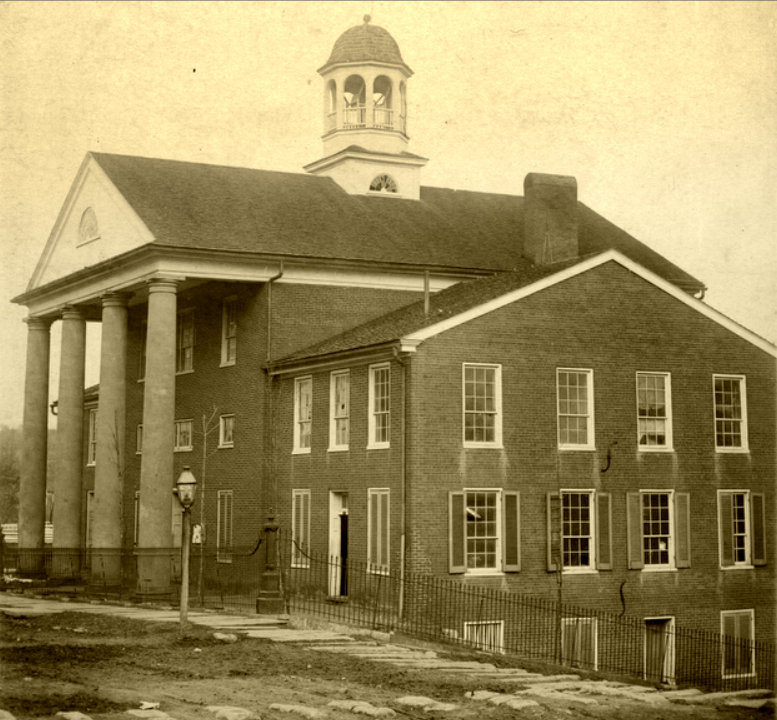
Preston already had heard of the weird story, which had spread around the country like wildfire, but he gave little credence to it. Now, this girl's mother was before him, sincere in her efforts to trap a murderer, firm in the belief that what she had to tell was true. Her brother-in-law also was there to add his suspicions, gathered from neighbors. For several hours the three conversed. When they concluded the meeting, attorney Preston started the wheels of justice moving toward one of the strangest and most fantastic murder trials ever held.
First, he questioned Dr. Knapp. That kindly old physician admitted his verdict of heart failure as the cause of Mrs. Shue's death could be wrong. She had been ailing, but circumstances surrounding her death had even given him some cause for suspicion. Both men agreed an autopsy would prove whether or not Mrs. Heaster's strange theory was true. If it was not, the examination would at least serve to relieve the aching heart of a saddened mother and throw undue suspicion from the shoulders of Shue.
The next day, Preston and Dr. Knapp went to Livesay's Mill, informed Shue of their plans, and ordered him to accompany them over the mountain to his wife's grave. In addition, they took Aunt Martha and little Anderson along. Shue vigorously protested against such action but dared not refuse to accompany the little investigating party. Throughout the long journey, he kept muttering, "I don't know what in the name of God they are taking her up for. They are not going to find anything." But he was wrong.
Reaching the mountain grave, Preston ordered several neighbors to exhume the body of Mrs. Shue. Such action, although commonplace today, had never been heard of in Greenbrier County, so it was only after considerable argument and threats of arrest that Preston succeeded in having the coffin raised from the grave and carried up the road to the schoolhouse.
Shue was taken along to the little building, then required to remain in the room while Dr. Knapp performed his autopsy. First, the physician searched for poison but found no trace of it. He worked over the body for three days and nights, seeking a cause of death. During that time, Shue, visibly nervous, but maintaining his innocence, sat on a large packing box, whittling it with his knife. Anderson Jones was there during the entire examination.
On the third day, Dr. Knapp was about to give up when he made a startling discovery that Mrs. Heaster had predicted. Jones said, "Dr. Knapp was working around Mrs. Shue's head. I could see Shue was getting more nervous. His whittling was not so good.
"Suddenly, the doctor turned to Mr. Preston. They whispered together for a few minutes. Then, Mr. Preston turned to Shue and said: " 'Well, Shue, we have found your wife's neck to be broken.' Shue's head dropped. A change came over him that I can't explain. But it certainly proved his guilt to me."

Mrs. Shue's body was placed once more in the little grave, its revenge complete. Shue was placed under arrest by Sheriff Hill Nickell. The authorities started back with him to his home at Livesay's Mill.
Arriving at the house the next day, Shue seemed in brighter spirits and offered the party breakfast. When they accepted, he cooked the meal himself, then announced he was ready to go to jail. At Lewisburg, he was charged with the murder of Mrs. Shue and placed in the county jail without bond to await the June term of Greenbrier County Circuit Court for trial before Judge J. M. McWhorter.
Prosecuting Attorney Preston and his assistant, Henry Gilmer, spent several months seeking additional evidence against Shue, both fearing the testimony of Mrs. Heaster would not convict their prisoner. In the meantime, Shue obtained Dr. William Rucker and James P. D. Gardner to defend him. Gardner, a Negro attorney, was the first of his race ever to practice in the county court.
The case finally came before the court on June 30. The little courtroom, still used today, was taxed to capacity by neighbors from both sides of Sewell Mountain. Some came to testify. Others to hear Mrs. Heaster's recital of her dreams. Little difficulty was encountered in securing a jury.
Within an hour, the trial was on. In his opening argument, Attorney Preston told the jury that the state's case against Shue was entirely circumstantial but that the evidence was such as had never been presented in any court before. He stressed that the dream testimony to be presented would prove beyond doubt to be authentic and informed the jurors he could prove it.
Dr. Knapp was the first witness called. He told of conducting the post-mortem examination and finding Mrs. Shue's death had resulted from a broken neck, dislocated so perfectly that it escaped his observation for three days. At the same time, the physician pointed out that the break was of such a nature Mrs. Shue could not have done it in a suicide attempt.
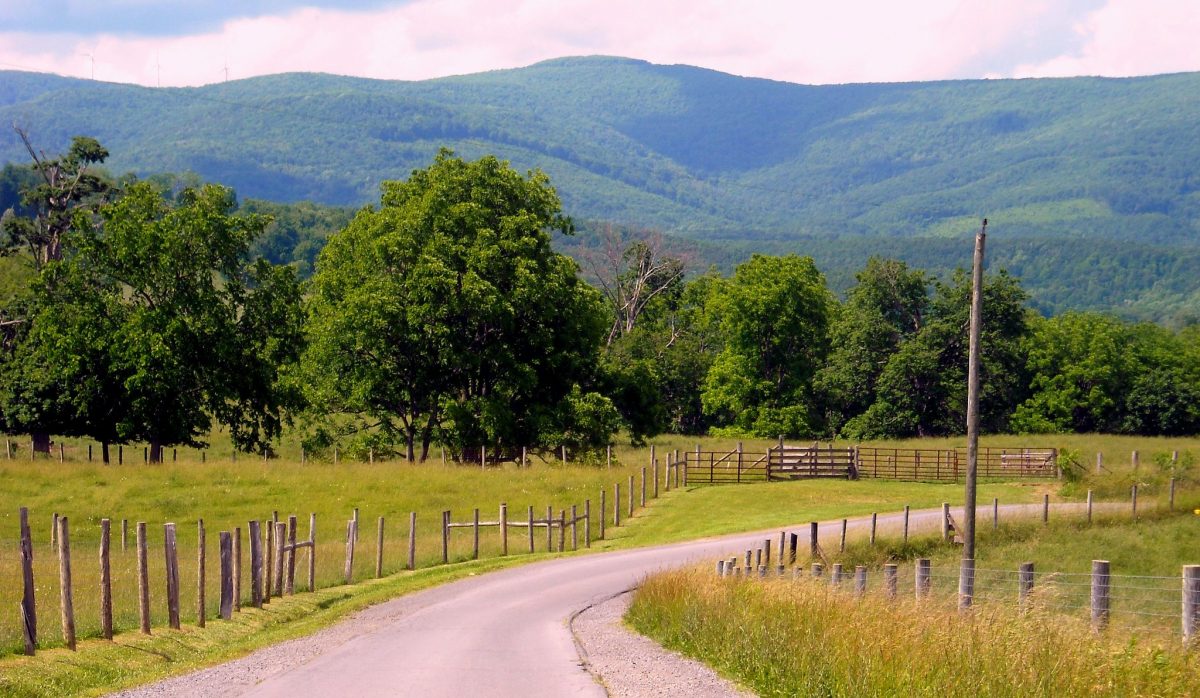
He further disclosed no evidence of how she had subjected herself to violence. The physician declared he made the usual examination when Mrs. Shue was found dead and had pronounced her demise due to heart failure only after Shue had refused to relinquish his wife's head, requesting him not to examine it. Anderson Jones testified to the defendant's repeated efforts to get him to go to the house and see if his wife wanted anything. Then Jones told of finding the body.
Other witnesses stated Shue was the only person seen about or known to have been in the house that morning before his wife was found dead. Others told how he assisted in dressing Mrs. Shue and, in doing so, placed a high, stiff collar around her neck. Then he added a large veil, several times folded and tied in a large bow under the chin around the collar. Still, other witnesses related how the victim's head appeared to be very loose at the neck and, when not supported, dropped from side to side.
Others testified that in his conversation and conduct after Mrs. Shue's death, the defendant failed to show a proper appreciation of the loss he had sustained. One testified that when Shue had been summoned to the post-mortem and inquest over at Sewell, the defendant declared he would come back under arrest, but they knew they could not prove him guilty of murder.
All of this testimony was leading up to the expected dramatic appearance of Mrs. Heaster.
Everything so far was purely circumstantial, and if Shue denied it, there was an equal chance of his being freed of the crime. Never before in the history of American courts had a jury been asked to convict a defendant on testimony that resulted from a dream.
Finally, the aged mother was called to the stand. With an air of determination, she told how she had been unsatisfied about the cause of her daughter's death and how she had prayed that Mrs. Shue might return from her grave and solve the mystery. She told of the daughter's four separate visits to her little bedroom and how the girl described her own death at the hands of a scheming and brutal husband.
Attorney Preston knew undue elaboration on Mrs. Heaster 's dreams would make them too fantastic for any jury to believe, so merely traced them lightly with his star witness. He further realized defense attorneys would try to break down this startling testimony. Then his case would be won, just as Mrs. Heaster had won him over from his efforts to break her story down as one of a vivid imagination.
Dr. Rucker, defense counsel, lost no time in getting at the dreams. Unaware of their full significance, he endeavored to blast them out of the courtroom as a start for his defense. At this point, the testimony found in the Lewisburg court records can better appreciate the story. So important was it considered that Thomas H. Dennis, then editor of the Greenbrier Independent at Lewisburg, printed the entire question and answer testimony, something rarely resorted to by newspapers before the present decade.
Rucker: Mrs. Heaster, did you not have a dream that aroused your suspicions to lead you to have the body exhumed?
Heaster: I had no dream, for I was as fully awake as I am this moment.
Rucker: And did you not have a dream or vision that lead you to have the body disinterred?
Heaster: Well, I was not satisfied that my daughter came to her death from natural causes, so I prayed that it might be revealed to me how she died. After about an hour spent in prayer, I turned over and there stood my daughter. I put my hand out to feel the coffin, but it was not there. She seemed to hesitate to speak to me, then departed. The next night, after I prayed again the manner of her death might be shown, she appeared and talked more freely, giving me to understand that I should be acquainted with the whole matter. The third night she appeared again and disclosed more to me. And on the fourth night, she returned and told me all about the difficulty, how it occurred, and how it was brought about.
Zona Heaster told her mother: "He came that night from the shop and seemed angry. I told him supper was ready, and he began to chide me because I had prepared no meat. I replied, there was plenty—bread and butter, apple sauce, preserves, and other things that made a good supper. He flew into a rage, got up, and came toward me. When I raised up, he seized each side of my head with his hands and by a sudden wrench dislocated my neck."
Mrs. Heaster continued the remainder of her answer: Then my daughter went on to describe the home where she lived and surroundings in the neighborhood so that it was fixed in my mind as a reality. When I later described it for people living near there, they told me they could not have been more accurate themselves. And she told me I could look back of Aunt Martha Jones' in the meadow in a rocky place, that I could look in the cellar behind a loose plank and see. Her house was a square log house, hewed right up to the square, and she said for me to look at the right-hand side of the door as you go in and in the right-hand corner. I saw the place exactly as she told me, and I saw blood there as she told me.
Rucker: Now, Mrs. Heaster, this sad affair was particularly impressed upon your mind and there was not a moment during your waking hours that you did not dwell upon it?
Heaster: No, sir, and there is not yet, either.
Rucker: And this was not a dream founded upon your distressed condition of mind?
Heaster: No sir. It was not a dream. I was as wide awake as I ever was.
Rucker: Then, if not a dream or dreams, what do you call it?
Heaster: I prayed to the Lord that she might come back and tell me what happened. And I prayed that she might come herself and tell on him.
Rucker: Do you think you actually saw your daughter in flesh and blood?
Heaster: Yes, sir, I do. I told them the very dress she was wearing when she was murdered. When she was about to leave the room, she turned her head completely around and looked at me like she wanted me to know all about it. And the next time she returned she told me all about it. The first time she came she seemed as if she did not want to tell me as much as afterward. The last night she came she told me she had done everything she could, and I am satisfied she did all that, too.
Rucker: Now, Mrs. Heaster, don't you know these visions, as you term or describe them were nothing more or less than four dreams founded upon your distress
Heaster: No, I don't know it. The Lord sent her to me to tell it. I was the only friend she knew she could tell and put any confidence in. I was the nearest one to her. Shue gave me a ring he pretended she wanted me to have. But I don't know what dead woman he might have taken it off of. I wanted my daughter's own ring, but he would not let me have it.
Rucker: Mrs. Heaster, are you positively sure there were not four dreams?
Heaster: Yes, sir. They were not dreams, I do not dream when I am wide awake, to be sure. And I know I saw her right there before me.
Rucker: Are you not considerably superstitious?
Heaster: No, sir. I am not. I was never that way before and am not now.
Rucker: Do you believe in the Scripture?
Heaster: Yes, sir; I have no reason not to believe in them.
Rucker: And do you believe the Scripture contains the words of God and his son?
Heaster: Yes, sir, I do. Don't you believe it?
Rucker: Now, I would like, if I could, to get you to say these were four dreams and not visions or appearances of your daughter in flesh and blood?
Heaster: If I am going to say that, I am going to lie.
Rucker: Then you insist your daughter actually appeared in flesh and blood before you on four different occasions?
Heaster: Yes, sir.
Rucker: Did she not have any other conversation with you other than the matter of her death?
Heaster: Yes, sir—some other little things. Some things I have forgotten—just a few words. I just wanted the particulars about her death, and I got them.
Rucker: When she came, did you touch her?
Heaster: Yes, sir. I got up on my elbows and reached out a little further, as I wanted to see if people came in their coffins. I leaned up and made a light. I wanted to see if there was a coffin, but there was not. She was just like she was when she left this world. It was just after I had gone to bed. I wanted her to come and talk to me, and she did. This was before the inquest, and I told my neighbors. They said she was exactly as I told them she was.
Rucker: Had you ever seen the premises where your daughter lived before these visits?
Heaster: No, sir. I had not. But I found them exactly as she told me they were. And never laid eyes on after her death. She told me all of this before I knew anything about the building at all.
Rucker: How long was it after you had those interviews with your daughter until you did see the buildings?
Heaster: It must have been a month or more after the examination.
Rucker: You said your daughter told you that down by the fence in a rocky place, you would find something?
Heaster: She said for me to look there, but she didn't say I would find anything. Just for me to look there.
Rucker: Did she tell you what to look for?
Heaster: No, sir. She did not. I was so glad to see her, I forgot to ask.
Rucker: Have you examined the place since?
Heaster: Yes, sir. We looked at the fence a little but didn't find anything.
Shue spent nearly an entire day on the witness stand seeking to build a defense for himself. He talked at great length and was very minute and particular in describing unimportant events but denied practically everything testified to by the other witnesses. He entered a positive denial of the charge against him, terming the prosecution spite work. In closing, he vehemently protested his innocence, calling on God to witness.
Though admitting he had served a term in the penitentiary, he declared he loved his late wife dearly and appealed to members of the jury to look into his eyes and then say if he was guilty. But this man's testimony and his desperate efforts failed to sway the jury but it made a most unfavorable impression.
So great did the state's case appear against him that Mr. Dennis, editor of The Greenbrier Independent, wrote in his paper: "There is no middle ground for the jury to take. The verdict inevitably must be for murder in the first degree or for an acquittal."
After lengthy arguments of the evidence by counsel for both the state and the defendant, Shue's case was given to the jury. This body solemnly filed from the room to perform their duty, returning in an hour with a verdict of murder in the first degree, but recommending life imprisonment.
After the verdict had been announced, Mr. Dennis again wrote in his paper: "Taking the verdict of the jury as ascertaining the truth, we must conclude that Shue deliberately broke his wife's neck—probably with his strong hands—and with no other motive than to be rid of her so that he might get another one more to his liking."
The twelve-man jury and many spectators in the courtroom did not see eye-for-eye in regards to a proper verdict, many persons not connected with the trial expressing the opinion that the death penalty should have been imposed.
Rumors of mob violence grew. Sentiment crystalized. On the Sunday following Shue's conviction, a small mob gathered at Meadow Bluff campgrounds to take the prisoner from his cell in the county jail and hang him. Shue's fate, the mob decreed, should be the same he had judged and carried out for his innocent wife—death by a broken neck.
At 10 o'clock they gathered at their rendezvous eight miles from Lewisburg. One man, however, decided his neighbors were making a terrible mistake. He was George M. Harrah. Hearing of the plan, Harrah mounted his horse and hurried to the house of Sheriff Nickell at Meadow Bluff. Both men started for Lewisburg to protect the prisoner, but, to reach there, had to pass the campgrounds. Somebody in the mob recognized the sheriff as he sped down the road past the grounds on his horse. Several would-be lynchers gave chase. They captured the two men at the point of pistols. Sheriff Nickell drew his gun and was about to fire, despite overwhelming odds, when he recognized his assailant.
Deciding to kill the gunman, even at the cost of his own life, the sheriff tried moral persuasion. Mob leaders went with him to the nearby home of D. A. Dwyer. There, after a considerable argument, Sheriff Nickell won his point. The mob disbanded, giving him the new, stout rope with which they had planned to carry out the hanging of Shue.
Two days elapsed before Shue was removed to the Moundsville Penitentiary to serve the remainder of his life. He died there eight years later.
Sign up to receive of FREE copy of West Virginia Explorer Magazine in your email weekly. Sign me up!




























